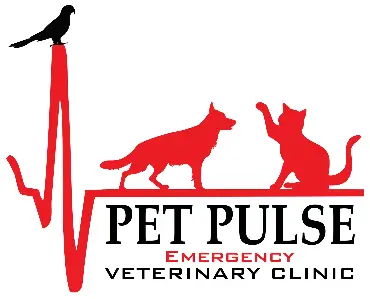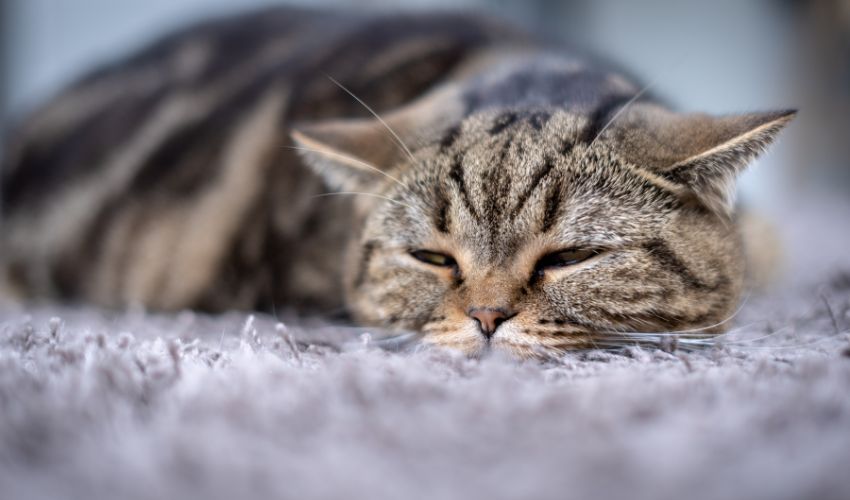Did you know cat fungal infections are more common than many pet owners realize? In Dubai’s warm and humid climate, fungal spores thrive, making cats more susceptible to infections, especially those that spend time outdoors or in multi-pet households. While these skin conditions are rarely life-threatening, they can cause significant discomfort and are highly contagious to other pets and even humans.
Understanding these infections early and seeking timely veterinary care can prevent complications and ensure your feline friend remains healthy. Here’s everything you need to know about symptoms, causes, and effective treatment options to protect your cat and household.
Understanding Fungal Infections in Cats
Fungal infections occur when spores invade a cat’s skin, leading to irritation, inflammation, and, in severe cases, deeper tissue damage. These fungi flourish in warm, moist environments and can be picked up from contaminated surfaces, infected animals, or soil. While most healthy adult cats resist infection, kittens, senior cats, and those with weakened immune systems are particularly vulnerable.
Fungal spores can remain dormant for long periods, making complete eradication challenging. Proper hygiene and early detection are key to prevention.
Common Types of Cat Fungal Infections
Dermatophytosis (Ringworm)
Ringworm is the most common fungal skin infection in cats, caused by Microsporum canis, Microsporum gypseum, and Trichophyton mentagrophytes.
Signs of Ringworm:
- Circular patches of hair loss
- Scaly, red, inflamed skin
- Possible asymptomatic carriers: Cats may spread infection without showing visible symptoms
Since ringworm is highly contagious, isolation and environmental disinfection are necessary to prevent its spread.
Sporotrichosis
Sporotrichosis is a fungal infection caused by Sporothrix schenckii, which enters the skin through wounds or scratches. It can be transmitted to humans and requires careful handling.
Symptoms:
- Small, firm nodules on the skin, often ulcerated
- Drainage from lesions
- Potential respiratory involvement in severe cases
Treatment typically involves systemic antifungal medication, and affected cats should be handled with gloves due to zoonotic risk.
Cryptococcosis
Caused by Cryptococcus neoformans, cryptococcosis often affects the respiratory system but can lead to skin lesions, especially in immunocompromised cats.
Symptoms:
- Nodular skin lesions
- Respiratory distress (sneezing, nasal discharge)
- Neurological signs in advanced cases
Cryptococcosis requires long-term systemic antifungal therapy, often with fluconazole.
Aspergillosis
Aspergillosis, caused by Aspergillus species, primarily affects the respiratory system but can result in skin involvement. Cats with weakened immunity are more prone to severe infections.
Symptoms:
- Ulcerated skin lesions
- Nasal discharge and breathing difficulties
- Loss of appetite
Veterinary treatment includes systemic antifungal medications, and in severe cases, surgical intervention may be required.
Malassezia Dermatitis
Unlike the previous infections, Malassezia is a yeast, not a fungus. While normally present on a cat’s skin, excessive growth can lead to inflammation, often secondary to allergies or underlying health conditions.
Symptoms:
- Greasy or oily skin
- Thickened, crusty patches
- Intense itching
Malassezia dermatitis is managed with medicated shampoos, antifungal agents, and addressing the underlying condition.
Causes of Fungal Infections in Cats
Fungal infections occur when microscopic spores enter a cat’s skin and begin to multiply, leading to irritation and inflammation. These infections thrive in warm, humid environments, making Dubai’s climate an ideal breeding ground for fungal growth.
Environmental Exposure
Cats that spend time outdoors or in multi-pet households are at greater risk.
Contaminated surfaces, bedding, and grooming tools can harbor fungal spores.
Weakened Immune System
Cats suffering from Feline Leukemia Virus (FeLV) or Feline Immunodeficiency Virus (FIV) are more prone to infections.
Stress, malnutrition, and chronic illnesses can weaken the immune system.
Age & Health Status
Kittens and senior cats have weaker immune defenses, increasing susceptibility.
Cats recovering from other illnesses may also struggle to fight off fungal infections.
Climate & Humidity
High humidity levels promote fungal growth on the skin and in the environment.
Poor ventilation or excessive moisture in homes can contribute to infections.
Symptoms of Fungal Infections in Cats
Early detection is crucial, as fungal infections can spread and worsen over time. While symptoms vary depending on the type of infection, the skin is usually the first area affected.
Hair Loss & Skin Changes
Localized or widespread bald patches, often circular.
Scaly, red, inflamed skin that may resemble allergic reactions.
Itching & Discomfort
Some fungal infections cause mild to moderate itching, though not always present.
Cats may excessively groom or scratch affected areas.
Nodules & Lesions
Deep fungal infections, like sporotrichosis, may cause ulcerated, pus-filled wounds.
Thickened or crusty skin in chronic cases.
Secondary Infections
Untreated fungal infections may lead to bacterial infections, worsening symptoms.
Pus, foul odor, and pain indicate severe complications requiring veterinary care.
Diagnosis of Cat Fungal Infection
Veterinary diagnosis is essential to distinguish fungal infections from other skin disorders. Since some infections mimic allergies or parasitic infestations, multiple tests may be necessary for accurate identification.
Physical Examination
A veterinarian will assess skin lesions, hair loss patterns, and overall health.
Exposure history (contact with other pets, outdoor environment) is considered.
Wood’s Lamp Test
Some strains of dermatophytes fluoresce under ultraviolet light.
While not 100% accurate, it provides an initial screening method.
Fungal Culture
Hair or skin samples are placed in specialized growth media to identify fungal species.
This is one of the most definitive diagnostic tools for ringworm.
Microscopic Examination
Scraped skin or plucked hair is examined under a microscope to detect fungal spores.
Useful for diagnosing Malassezia dermatitis and deeper fungal infections.
Treatment of Fungal Infections in Cats
Treating cat fungus infection requires a combination of antifungal therapy, environmental management, and proper hygiene. Mild cases may be resolved with topical treatments, while severe infections need systemic medication.
Topical Antifungals
Medicated creams, lotions, or shampoos containing miconazole, chlorhexidine, or enilconazole.
Effective for localized infections but requires regular application.
Systemic Antifungals
Oral medications such as itraconazole, fluconazole, or terbinafine for severe cases.
Treatment duration may last weeks to months, depending on severity.
Antibiotics for Secondary Infections
If bacterial infections occur, antibiotics may be prescribed.
Helps reduce inflammation, pus formation, and further skin damage.
Environmental Decontamination
Frequent cleaning, vacuuming, and disinfecting are crucial to prevent recurrence.
Using antifungal sprays on bedding, furniture, and grooming tools can help eliminate spores.
Nutritional Support
A diet rich in omega fatty acids, antioxidants, and quality protein strengthens immune health.
Supplements may aid skin recovery and overall resistance to infections.
Isolation & Hygiene Measures
Infected cats should be quarantined from other pets until recovery.
Owners must wash their hands thoroughly and wear gloves when handling infected cats.
Conclusion
Skin fungal infections in cats are common in Dubai, but early detection and proper veterinary care can effectively manage them. Understanding different fungal infections helps pet owners take proactive steps in diagnosing, treating, and preventing outbreaks.
If you suspect your cat has a fungal infection, schedule a veterinary consultation immediately to ensure proper treatment and recovery.



